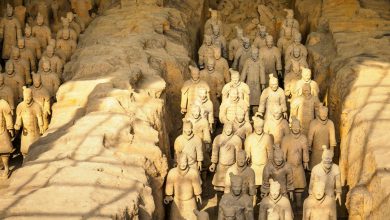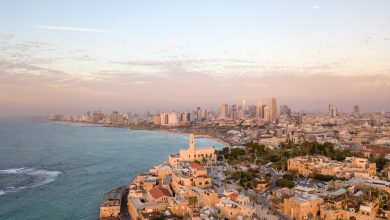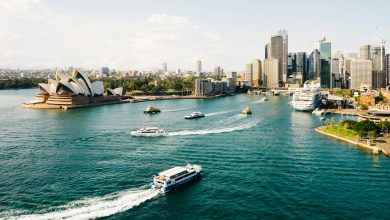
Embarking on a journey to the captivating country of Vietnam can be the adventure of a lifetime, but a successful trip hinges on savvy preparation. Our comprehensive Vietnam Travel Guide is your indispensable companion, designed to navigate the complexities of planning your stay. From unraveling the intricacies of visa requirements to acquainting you with the local customs and culinary delights, understanding these elements beforehand can transform your travel experience. With the promise of lush landscapes, vibrant cityscapes, and rich cultural tapestry, let’s delve into the essentials that will ensure your voyage to Vietnam is as seamless as it is unforgettable.
Understanding Vietnamese Visas and Entry Requirements
When planning your trip to Vietnam, understanding the visa and entry requirements is a crucial first step. This section of our Vietnam Travel Guide will demystify the process, ensuring you’re well-prepared for your adventure.
Most travelers to Vietnam must have a visa to enter the country. Depending on your nationality, the process and requirements can vary, but here are some general points to keep in mind:
- Visa Exemptions: Some countries have bilateral agreements with Vietnam, allowing their citizens to visit visa-free for a specified number of days. Check with the Vietnamese consulate website or a reliable Vietnam Travel Guide to see if your country qualifies.
- e-Visa: For many travelers, the most convenient option is the single-entry e-Visa. It’s valid for 30 days and can be applied for online, making it a hassle-free process.
- Visa on Arrival (VoA): Another option is to obtain a VoA. This requires a pre-approval letter, which you must arrange before your trip. Upon landing, you present the letter and obtain your visa — be prepared for possible queues.
- Long-Term Stays: If you’re aiming to stay longer than 30 days, you’ll need to apply for a different type of visa which can be a multi-entry and may allow stays of up to three months or more.
- Documentation: Make sure your passport is valid for at least six months from your planned date of entry. Some visas may also require passport-sized photos, so have a few on hand.
| Visa Type | Validity | Entry Type | Application Method |
|---|---|---|---|
| Visa Exemption | Up to 15 days | Single-entry | None, depends on bilateral agreements |
| e-Visa | 30 days | Single-entry | Online |
| Visa on Arrival | 30 to 90 days | Single/Multiple-entry | Online (Pre-approval required), then in-person |
| Other Visas | 30 to 90 days+ | Multiple-entry | Embassy/Consulate application |
Keep in mind that regulations can change, and it’s important to check the latest information close to your departure date. Using this Vietnam Travel Guide as a reference is a great start, but always verify with official sources to ensure a smooth journey. Remember, a bit of preparation can help you avoid any unwelcome surprises and kickstart your Vietnam adventure on the right foot!
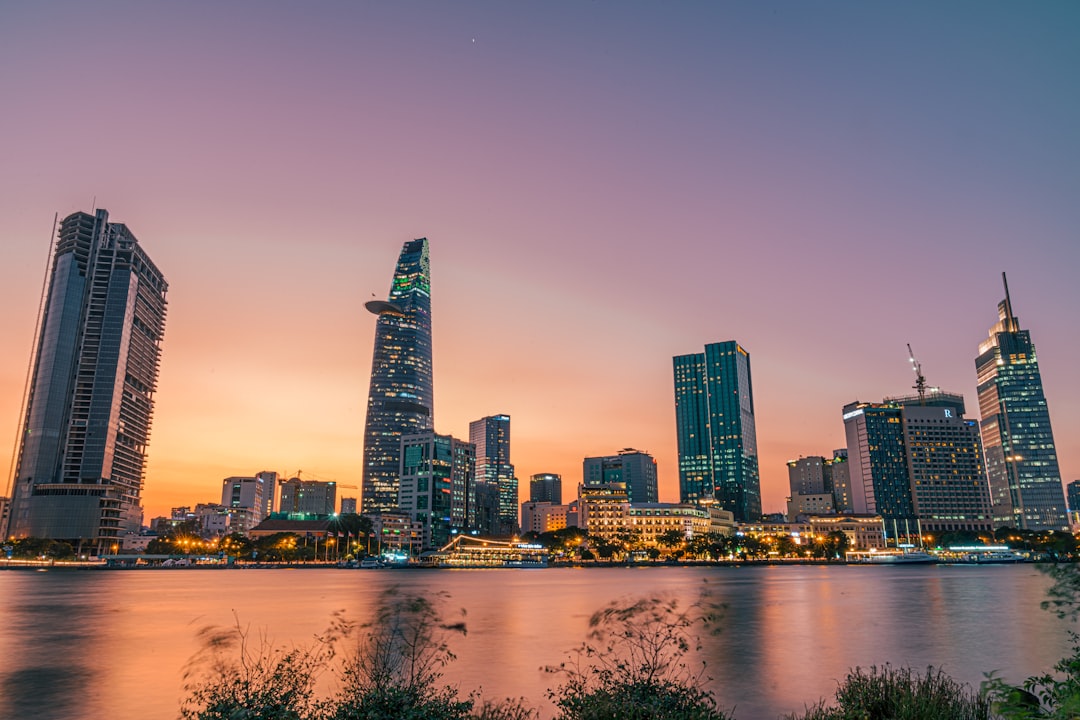
Exploring the Regions: Where to Go in Vietnam
When crafting your Vietnam travel guide, understanding the country’s diverse regions is essential to tailor a memorable journey. Vietnam stretches over 1,000 miles from North to South, with each region offering its distinct landscapes, cultural experiences, and attractions.
Northern Vietnam is a treasure trove of cultural heritage and natural wonders. Key places include:
- Hanoi: The capital city is known for its bustling Old Quarter, serene lakes, and rich history.
- Sapa: Famous for its terraced rice fields and ethnic minority cultures.
- Ha Long Bay: A UNESCO World Heritage site with stunning limestone karsts.
Central Vietnam offers a blend of history and scenery:
- Hue: The ancient imperial capital with its historic Citadel and tombs.
- Hoi An: A well-preserved trading port with a unique blend of architectural styles.
- Da Nang: Known for its sandy beaches and the scenic Marble Mountains.
Southern Vietnam features dynamic cities and verdant deltas:
- Ho Chi Minh City: The bustling metropolis has a lively nightlife and war history museums.
- Mekong Delta: Experience the maze of rivers, swamps, and islands, and explore the floating markets.
- Phu Quoc: A tranquil island paradise with white sand beaches.
No Vietnam travel guide would be complete without mentioning the country’s central highlands and coastal retreats, which offer serenity away from the urban pace.
Remember, each region has its own climatic nuances, so plan accordingly. As you scheme through your Vietnam travel guide, consider these diverse locations to experience the country’s full splendor. Whether you’re seeking adventure, relaxation, or cultural enrichment, Vietnam’s multifaceted regions deliver it all.
Decoding the Climate: When to Visit Vietnam
When planning your trip using a Vietnam Travel Guide, understanding the country’s climate is crucial. Vietnam stretches over several climatic zones, which means weather patterns can vary significantly from the north to the south.
Best Times to Visit Based on Climate
- Northern Vietnam: In this region, expect a distinctive seasonal contrast. The best times are from October to April when the weather is generally cooler and dryer. Winter months can be quite chilly in places like Hanoi and Sapa, with temperatures potentially dropping below 15°C (59°F).
- Central Vietnam: Home to cities like Hue and Da Nang, Central Vietnam experiences hot, dry weather between January and August, with temperatures ranging from 22°C to 35°C (72°F to 95°F). The rainfall picks up from September to December, so it’s best to avoid the region during these months if you prefer a dryer experience.
- Southern Vietnam: Having a more tropical climate, places like Ho Chi Minh City are generally warm year-round with a wet season from May to November. For a visit with less rainfall, aim for December to April when the weather is dry and hot, with average temperatures hovering around 28°C (82°F).
Monthly Climate Breakdown
| Month | North Vietnam | Central Vietnam | South Vietnam |
|---|---|---|---|
| Jan – Apr | Cool/Dry | Warm/Dry | Hot/Dry |
| May – Aug | Hot/Wet | Hot/Dry | Hot/Wet |
| Sep – Dec | Cool/Wet | Cool/Wet | Warm/Dry |
Before booking your trip, it’s essential to consider not just the climate, but also regional festivals and national holidays. For instance, traveling during Tet, the Vietnamese New Year, can be fascinating but also challenging due to crowded transportation and busy hotels.
In conclusion, the ideal time to use your Vietnam Travel Guide for a visit varies depending on where you wish to go and what experiences you’d like to have. Remember, Vietnam’s dynamic weather suggests packing layers and always being prepared for sudden changes. By doing so, you’ll ensure a comfortable and enjoyable trip, with the weather playing into your travel adventures rather than hindering them.
Cultural Etiquette: What to Do and What to Avoid
As with any journey abroad, knowledge of local customs and etiquette is vital for a smooth experience. When exploring the rich cultural tapestry of Vietnam, awareness of do’s and don’ts is particularly important. Below are some key tips to ensure your behavior is respectful and appropriate, helping you to navigate social situations gracefully while using this Vietnam travel guide.
Do’s:
- Greet formally: Vietnamese people appreciate polite greetings. A slight bow or a nod is appropriate, and for the first meeting, a handshake paired with a smile works well.
- Dress conservatively: When visiting temples or religious sites, cover shoulders and knees. Modesty shows respect for local customs.
- Be punctual: Value punctuality when meeting someone, as it shows respect for their time.
- Use both hands: When giving or receiving something, especially business cards or gifts, use both hands as a sign of respect.
Don’ts:
- Avoid public displays of affection: Being conservative in behavior is the norm in Vietnam, and excessive public displays of affection are frowned upon.
- Do not point with your finger: Pointing with your finger can be considered rude. Instead, use your whole hand to gesture.
- Refrain from touching someone’s head: In Vietnamese culture, the head is considered the highest part of the body and should not be touched.
- Keep your feet polite: Do not point your feet at people or sacred objects, as feet are considered the lowest and least clean part of the body.
Understanding these cultural nuances not only enriches your travel experience but also fosters mutual respect between you and the locals. Most Vietnamese are forgiving of unintentional faux pas, but making the effort to adhere to their customs will undoubtedly enhance your overall journey, making this Vietnam travel guide your indispensable companion on the road.
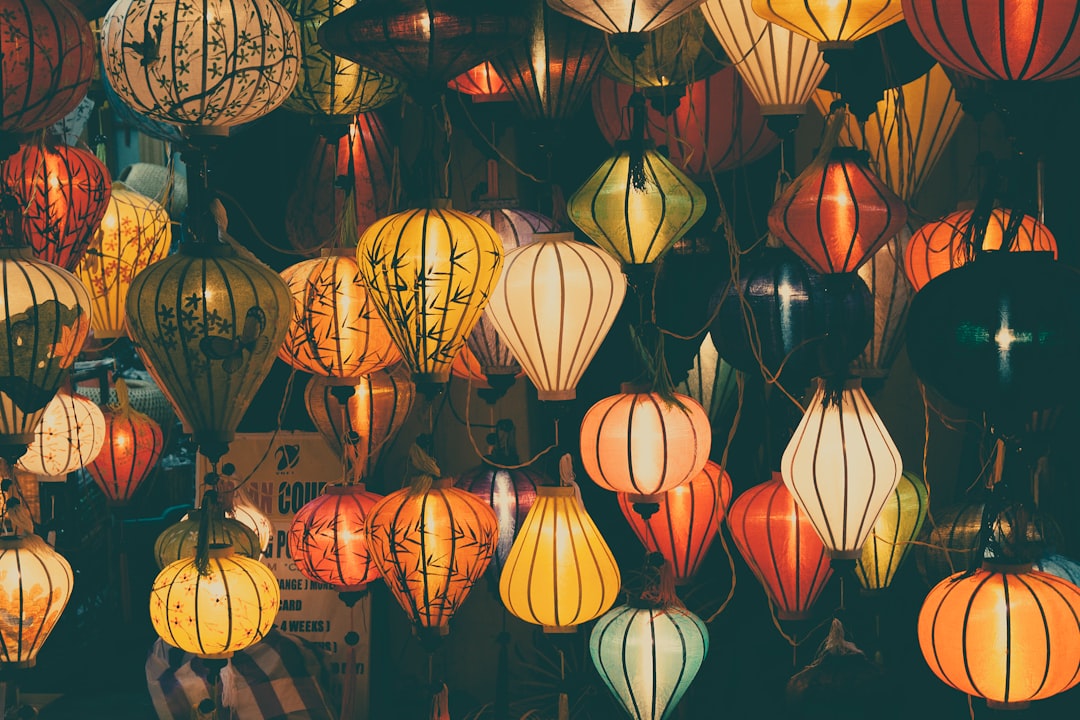
Transportation Tips for Navigating Vietnam
Traveling around Vietnam is an adventure in itself, and knowing the best ways to navigate can enrich your journey significantly. This Vietnam travel guide segment will provide you with essential transportation tips to help you move around the country with ease.
Firstly, consider your comfort and travel time affordability. Here are some popular modes of transport:
- Motorbikes: For the intrepid traveler, renting a motorbike offers flexibility and a thrilling way to see the country. However, ensure you’re comfortable with local driving conditions.
- Buses: A cost-effective option, long-distance buses can take you to the farthest corners of Vietnam. Sleeper buses are available for overnight journeys.
- Trains: The Reunification Express runs from Ho Chi Minh City to Hanoi and is an excellent way to see the countryside.
- Domestic Flights: With several budget airlines, flying is a quick alternative, linking major cities and popular tourist destinations.
- Taxis and Ride-Hailing Apps: In cities, metered taxis and apps like Grab offer convenient rides.
Let’s compare a few common routes:
| From – To | Motorbike | Bus | Train | Flight |
|---|---|---|---|---|
| HCMC – Da Nang | Adventurous/Long | Budget/Fair | Scenic/Long | Fast/Expensive |
| Hanoi – Sapa | Challenging/Long | Budget/Longer | Not Direct | Not Available |
| Da Nang – Hoi An | Fun/Short | Affordable/Short | Not Direct | Not Available |
Remember, while the thought of navigating a new country can be daunting, the infrastructure in Vietnam is traveller-friendly. Most importantly, make sure you have the necessary permits and licenses, especially if you plan to operate a motorbike.
In conclusion, navigating Vietnam is part of the adventure, and with these tips, you’re well-prepared to explore the stunning landscapes and bustling cities. Whether you choose the slow, scenic route or prefer speed and convenience, your Vietnam travel guide to transportation will help ensure a memorable journey.
Vietnamese Cuisine: What to Eat and Where to Find It
When exploring the culinary landscape of Vietnam, you’re in for a delightful voyage of taste bud tantalizing experiences. Here are some must-try dishes and tips on where to find them to enrich your Vietnam Travel Guide:
Pho – Arguably the national dish, this comforting noodle soup usually features beef (pho bo) or chicken (pho ga) and is omnipresent from street vendors to upscale restaurants. For an authentic taste, head to the bustling streets of Hanoi’s Old Quarter.
Banh Mi – This sandwich is a fusion wonder, a Vietnamese cuisine hallmark with baguette bread stuffed typically with a variety of meats, vegetables, and condiments. Saigon (Ho Chi Minh City) is famous for its Banh Mi, so make sure to grab one from a street-side stall.
Goi Cuon – These fresh spring rolls are the antithesis of the fried version, filled with greens, prawns, pork, and vermicelli, and are usually served with a hoisin-based dipping sauce. Coastal cities, like Danang and Nha Trang, offer some of the freshest choices.
Bun Cha – Grilled pork (cha) served with rice vermicelli noodles (bun) and a side of herbs with dipping sauce. The birthplace of Bun Cha is Hanoi, where you can savor this for lunch like a local in the city’s many Bun Cha joints.
When searching for the best culinary experiences, consider the following:
- Street Food Markets: For a lively atmosphere and a truly immersive experience, visit places like Hanoi’s Night Market or Ben Thanh Market in Ho Chi Minh City.
- Local Restaurants: Look for busy spots with a high turnover of locals; a sign of fresh and delectable food awaits.
- Cooking Classes: Participate in a class for both a learning experience and a meal—you’ll often visit a local market as part of the course.
Remember, part of a great Vietnam Travel Guide includes leaving room for spontaneous discoveries. So, while you explore the country’s regions, be open to trying new dishes and flavors, each telling its own story about Vietnam’s rich culture and heritage.
Accommodation Options: From Budget to Luxury
When crafting your Vietnam travel guide, understanding the plethora of accommodation options is crucial. Vietnam offers a wide range of places to stay that cater to every travel style and budget. From the thrifty backpacker hostels to the extreme indulgence of luxury resorts, there’s something for everyone.
Budget-Friendly Stays
- Hostels: Perfect for solo travelers and backpackers. Many offer dorm rooms, social events, and communal spaces.
- Guesthouses: Family-run establishments that provide a homely feel and often include breakfast.
- Budget Hotels: Basic amenities, clean rooms, and central locations make these a great value choice.
For those looking to save money without sacrificing comfort, these options not only provide a roof over your head but also offer a chance to meet fellow travelers and local hosts.
Mid-Range Accommodations
- Boutique Hotels: Unique themes and personalized services without the hefty price tag of luxury hotels.
- Serviced Apartments: Ideal for long-term stays, offering kitchen facilities and more space.
Mid-range accommodations are an excellent balance between comfort and cost, offering travelers a glimpse into Vietnam’s hospitality with a touch of luxury.
High-End Hotels and Resorts
- Luxury Resorts: Beachfront locations, world-class amenities, and premium service.
- Five-Star Hotels: Often located in Vietnam’s major cities, they provide top-notch facilities and comfort.
For those willing to splurge, Vietnam’s luxury accommodations are on par with some of the best in the world, ensuring an unforgettable stay.
In conclusion, this Vietnam travel guide section highlights that whether you’re saving or splurging, you’ll find suitable accommodations that fit your needs and enhance your travel experience.
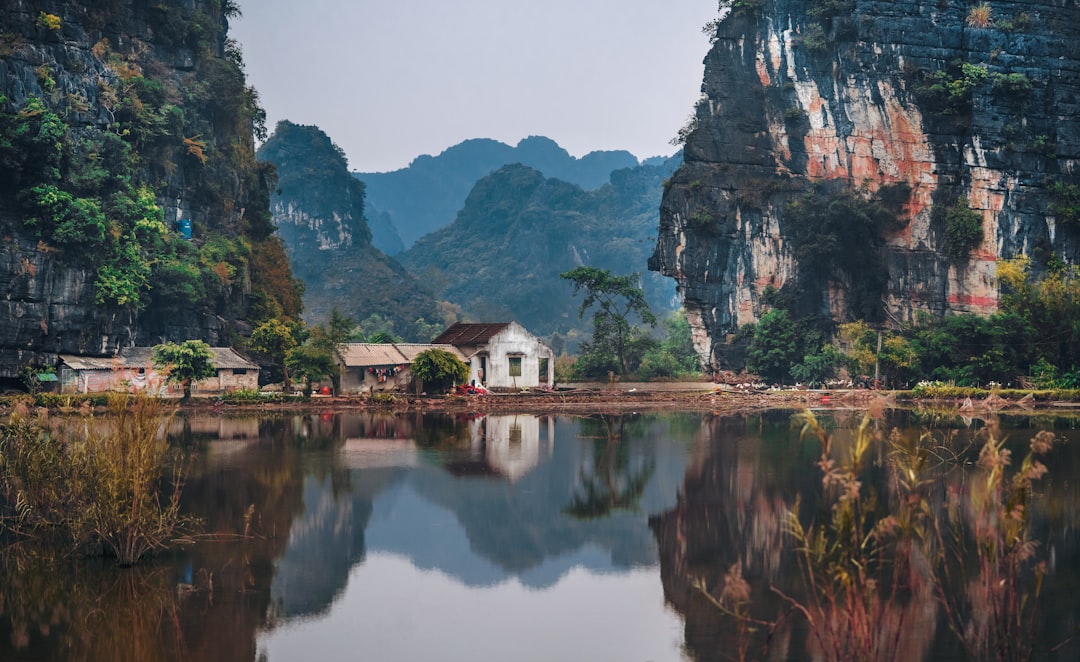
Language Basics: Essential Vietnamese Phrases for Travelers
Embarking on a journey through Vietnam can be both exciting and challenging, especially when it comes to overcoming language barriers. A section in your Vietnam Travel Guide must cover some essential Vietnamese phrases to ensure smoother interactions with locals. Mastering a few common expressions does not only show respect toward the culture, but it can also immensely enhance your travel experience.
Here are some basic Vietnamese phrases that every traveler should have at their fingertips:
- Greetings and Politeness
- Hello: Xin chào (sin chow)
- Thank you: Cảm ơn (kahm uhn)
- Yes: Vâng (vuhng)
- No: Không (khome)
- Basic Needs
- I would like to order: Tôi muốn đặt hàng (toy muuhn daht hang)
- How much is this?: Cái này giá bao nhiêu? (kai nai zah bow nyew?)
- Where is the bathroom?: Nhà vệ sinh ở đâu? (nya veh sinh uh yow?)
- Directions and Travel
- Left: Trái (chai)
- Right: Phải (fai)
- Straight ahead: Đi thẳng (dee tang)
- Help!: Cứu (kuu!)
- Emergencies and Health
- I need a doctor: Tôi cần bác sĩ (toy kan back see)
- Call the police: Gọi cảnh sát (goi kahng sat)
- Shopping and Bargaining
- Discount, please: Giảm giá được không? (zahm zah du-uck khome?)
Learning these phrases can make all the difference when navigating your way through Vietnam. Furthermore, the Vietnamese people are typically very appreciative of travelers who take the time to learn even just a small amount of their language. So, for a richer and more immersive travel experience, make sure to incorporate these expressions into your Vietnam Travel Guide itinerary. Remember, even a simple “Xin chào” can go a long way!
Staying Safe and Healthy While Traveling in Vietnam
When planning your journey with the help of a Vietnam Travel Guide, safety and health should never be ignored. Vietnam is a spectacular country to visit, but like any travel destination, it’s important to take certain precautions to ensure your trip is as enjoyable and incident-free as possible.
Here are several tips to keep you safe and healthy while traveling in Vietnam:
- Stay Vaccinated: Before departure, consult with a travel clinic to get all the recommended vaccinations. Typical shots include Hepatitis A and B, Typhoid, Tetanus, as well as antimalarial medication if you plan to visit rural areas.
- Travel Insurance: It’s crucial to have comprehensive travel insurance that covers medical expenses, theft, and cancellations. Double-check that your policy covers motorbiking if you plan to ride, as this is a common but potentially hazardous way to travel in Vietnam.
- Food and Water Safety:
- Eat at busy establishments where food turnover is high, and the food is more likely to be fresh.
- Avoid raw vegetables, unpasteurized dairy products, and unpeeled fruits.
- Stick to bottled or boiled water, and steer clear of ice unless you’re certain it’s made from purified water.
- Road Safety: Traffic in Vietnam can be chaotic. Always remain vigilant when crossing streets, and rent a motorbike only if you’re an experienced rider. Helmets are not just a precaution; they’re law.
- Prevent Insect Bites: Use insect repellent liberally, wear long sleeves and pants, and consider mosquito netting while sleeping in rural areas to avoid mosquito-borne illnesses.
- Heat and Sun: Due to Vietnam’s tropical climate, heatstroke and sunburn can be risks.
- Drink plenty of water to stay hydrated.
- Use sunscreen liberally and wear a hat and sunglasses for sun protection.
- Culture and Customs: Respecting local customs and dress codes can prevent unintentional disrespect and keep interactions with locals positive.
By being vigilant and prepared, you can ensure that your experience in Vietnam will be memorable for all the right reasons. A comprehensive Vietnam Travel Guide is an invaluable companion in helping you understand the nuances of staying healthy and safe while exploring this vibrant country.

